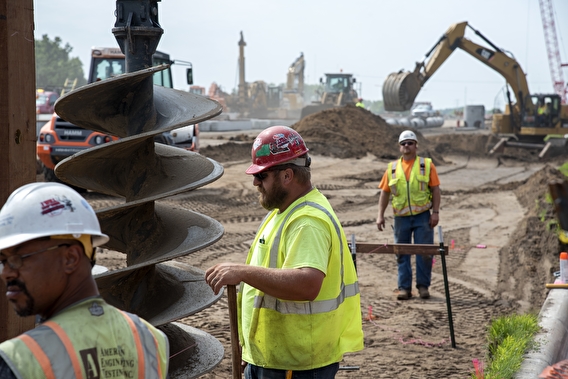
The transportation industry is facing a growing workforce shortage—especially within the public sector. Without a reliable pipeline of dedicated staff, these agencies could experience disruptions in the important work they do. A U of M study identified causes of the shortage and strategies public agencies can implement to attract and retain staff.
The study was sponsored by the Minnesota Local Road Research Board. “Like employers everywhere, Minnesota’s transportation agencies need to evolve in order to attract and keep a top-notch workforce,” says Lyndon Robjent, director of public works for Carver County and the project’s technical liaison.
Professor Kenneth Bartlett from the U’s Department of Organizational Leadership, Policy, and Development led the project. The work began with a literature review to better understand the changing labor market as well as current trends and best practices in human resources strategies.
The researchers next surveyed an anonymous sample of 149 workers currently employed in the public and private sectors of Minnesota’s transportation industry to gauge their perceptions on topics such as workplace satisfaction, loyalty, and career support. They then conducted one-on-one follow-up interviews with 14 employees to explore these issues in more depth.
According to the study, shifting demographics are a major reason for the workforce shortage. The US labor force is aging rapidly and baby boomers are retiring—spurring a steady decline in the labor force participation rate, Bartlett says.
The labor force is also becoming more diverse in a number of ways, including gender and ethnicity, and immigration remains a key driver of population growth. Historically, however, public transportation organizations have struggled to achieve a diverse workforce and have traditionally been viewed as white and male-dominated, Bartlett says.
In addition, younger generations are bringing different values to the job, with many concerned more about career advancement and less about long-term commitment. “The shift in worker values makes it extremely important for organizations to focus on career mobility and paths for advancement,” Bartlett says. However, some public agencies—especially smaller ones—may see this as infeasible, and larger agencies may also find it challenging. The result is that fewer engineers and other highly skilled professionals are entering the field through work for public agencies, and retaining those who do is becoming increasingly difficult.
With fewer workers available, “employers in both the public and private sectors are constantly competing to fill vacancies,” Bartlett says. Jobs in rural areas—which have older and less diverse populations—tend to be harder to fill than those in urban areas.
The survey and interviews allowed the research team to dig deeper into the views of current workers in Minnesota. Researchers found that transportation jobs in the public sector offer several advantages over their private counterparts, including more competitive benefits, a perception of greater stability during economic downturns, greater work-life balance, and variety of work. Private-sector jobs are thought to offer higher salaries, more advancement opportunities, better-defined expectations, and less bureaucratic red tape.
Noting that challenges will differ across the state, the team developed recommendations for public transportation agencies:
- Accentuate the positives. Make sure that hiring managers know the benefits of working in public agencies so they can relay them to applicants.
- Describe jobs realistically. If long days and overtime are part of the job, say so upfront so employees know what they’re agreeing to.
- Cut red tape. When possible, make exceptions for hiring, promotion, and compensation.
- Offer mentorships. Provide opportunities for employees to learn from each other, with the expectation that these could lead to job promotion.
- Plan for succession. Fill vacancies quickly and don’t rely on existing staff to absorb more work.
- Document workplace practices. Invest in knowledge management systems so that key information doesn’t leave when employees retire.
- Increase awareness. Create a marketing strategy that exposes younger people to the transportation industry and helps them visualize a career path.
The changes stemming from the pandemic could make the existing workforce challenges even more critical, Bartlett says, and advises agencies to take a “strategic and flexible approach” to planning for recruitment, retention, and development of employees.


